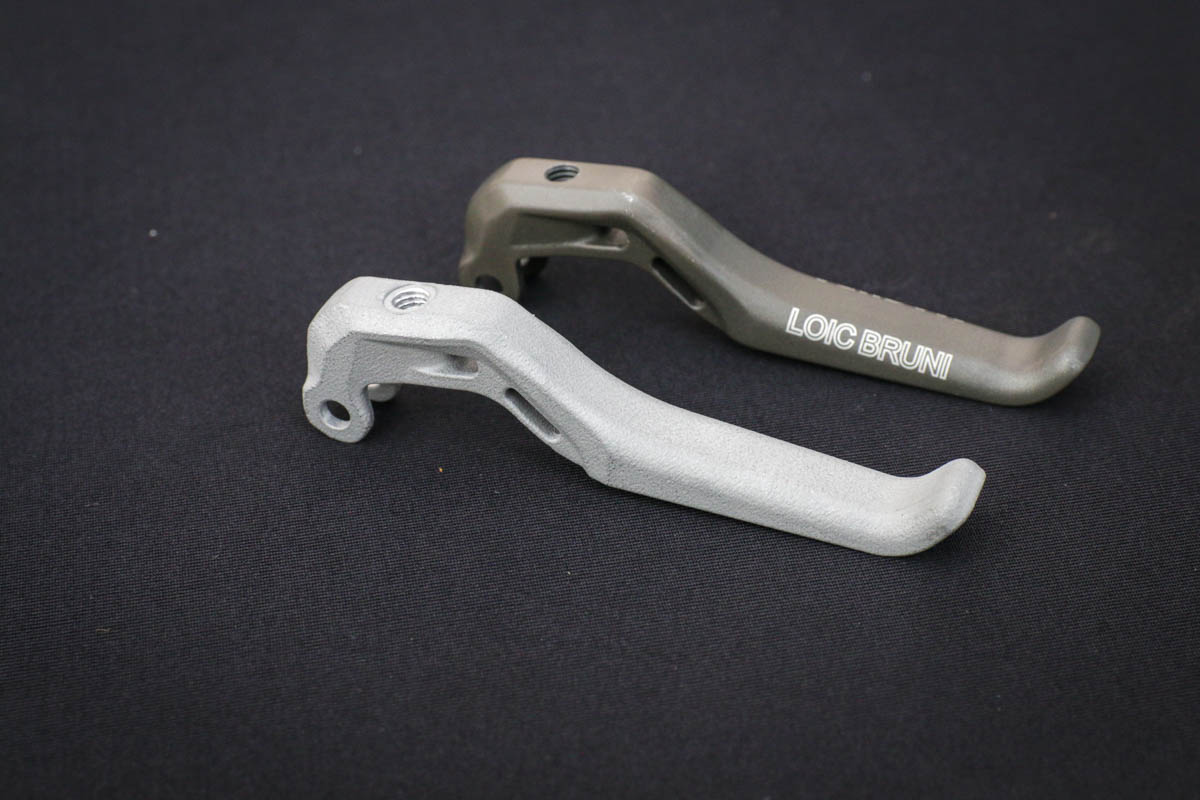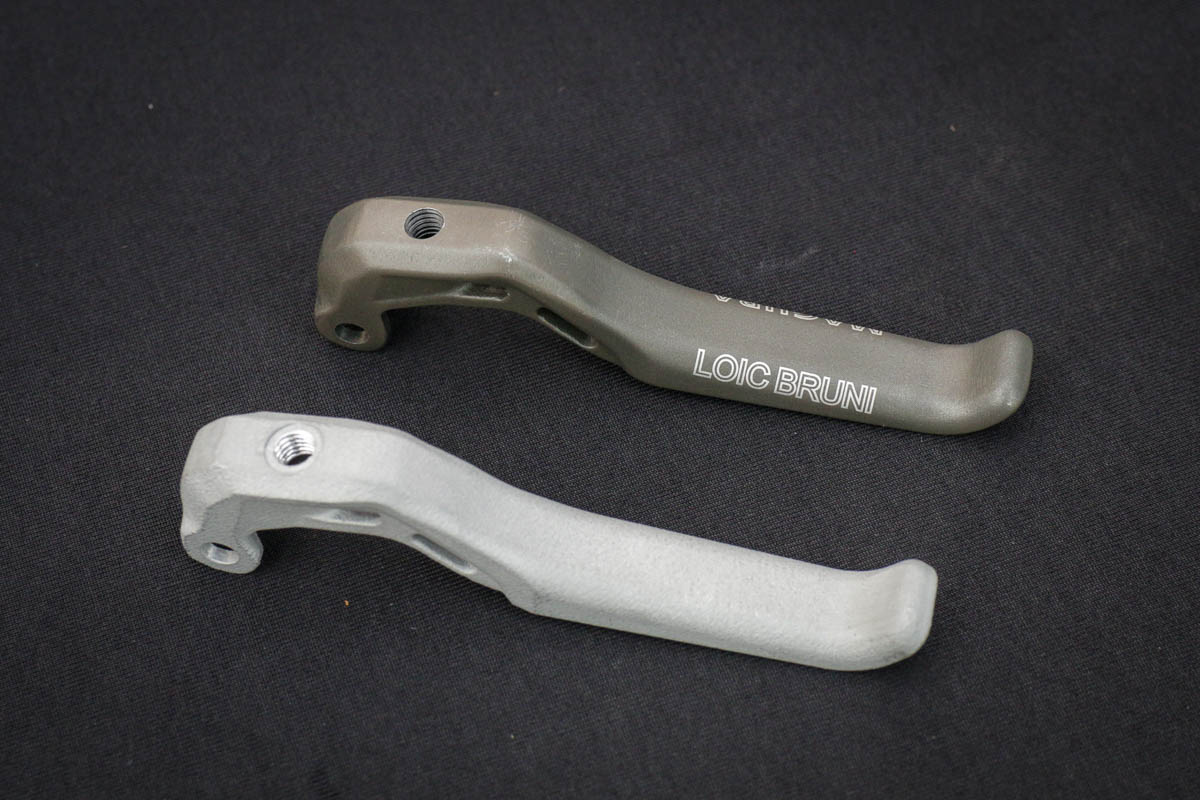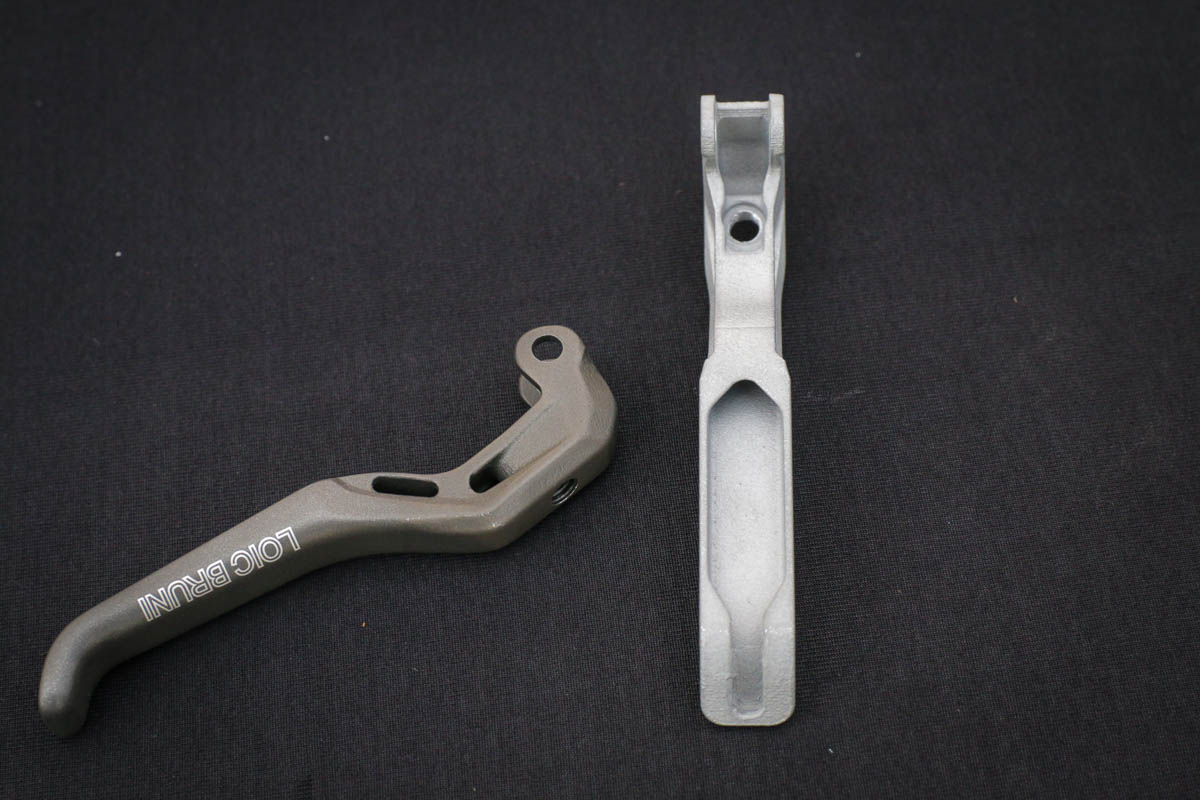How do you go about creating new custom brake levers for your sponsored athletes? If you’re Magura, it involves a lot of 3D printing – in a number of different materials. Wanting to create a lever that was longer than their 1-Finger HD or HC3 levers and featured a different shape, Magura worked with Loic Bruni to custom tune the design of the lever.
To do so, they started with the base lever and added 3D printed plastic covers to quickly try out different shapes. Once they felt that they were nearing the desired shape, further test samples were 3D printed out of titanium until the final shape was created.
Printing production levers out of titanium would likely price them out of reach, so Magura is printing the production levers out of aluminum. This is said to produce a lever blade that is stiffer than carbon, but thanks to the hollow pockets allowed by 3D printing, a lever blade that is also lighter than their standard aluminum levers. It also seems to allow Magura to skirt the new World Cup regulations in 2019 that prevent pros from racing with prototype parts.
Even as the first 3D printed lever from Magura, the pricing will be in line with their carbon levers at around $80. To go along with the new lever, Magura has worked with SQlab to develop a brake lever buyers guide which will use hand size to help you decide between their five different lever options and also help you dial in your brake fit to give you the most control possible.


